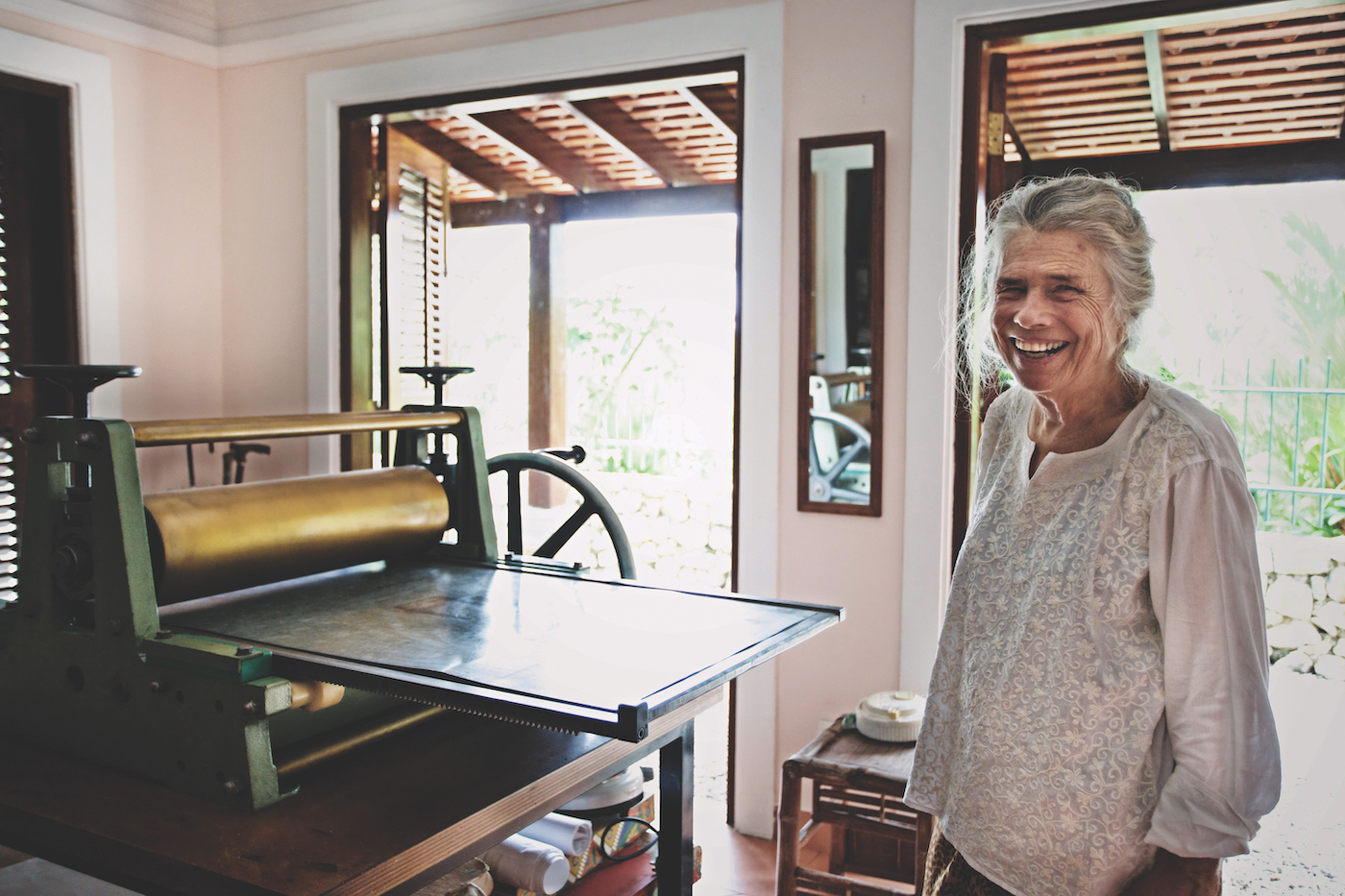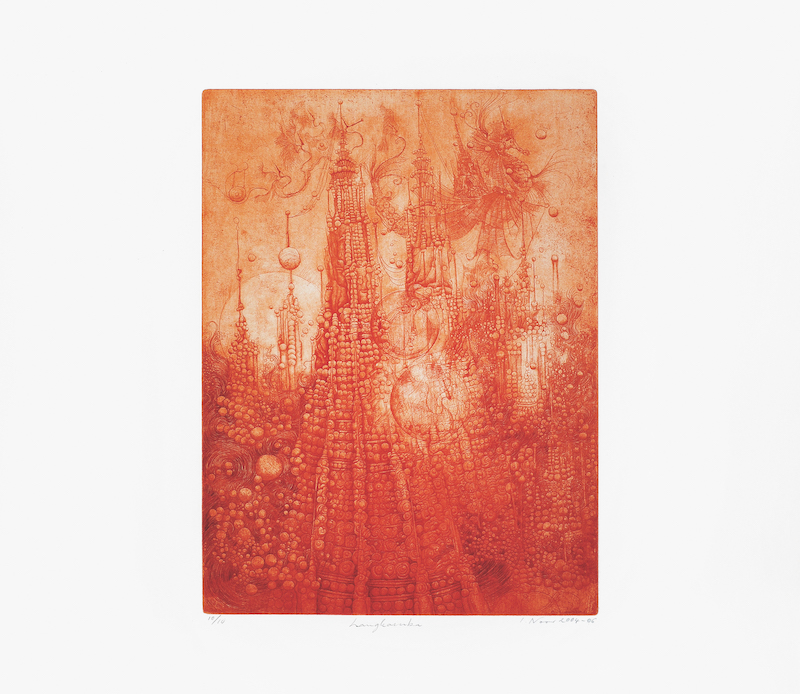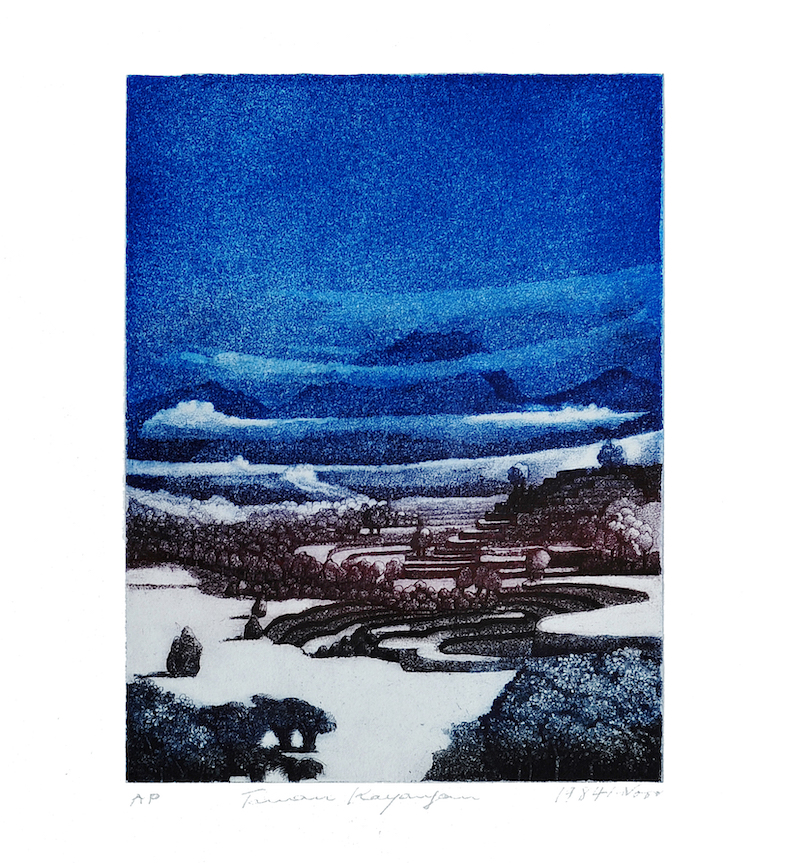
Born in Wipperfürth, Germany, Ilse remembers having nothing to draw with while growing up (All photos: Syakir Zakii)
The first task an art teacher assigned Ilse Noor, after she had begged him to take her as his student, was to draw the Bonn skyline. Willy Maria Stucke’s atelier above a shop in the German city had a door that opened to the roof. He put the eager teenager on a stool near a chimney and told her, “You sit there and draw the outline of the rooftops, only no eraser”.
“It took me hours to do that because, which line do you draw? This was how I learnt to see and observe,” says Ilse who, now 80, has retained an eye for detail and a steady hand that turns what she sees into line drawing etchings.
Sometimes an artwork requires time and she draws from what she has committed to memory to complete it. “I will start, then put it away. After a few years, I will complete it because I already have the picture in my heart. The lines are all in my head.”
The master printmaker is holding an exhibition of various large works as well as rarely shown etching print proofs at Cult Gallery, Kuala Lumpur. The titular piece of the show, Creation (Purple), is accompanied by a prayer “relevant to what is happening around us today”, says Ilse.
“I took the words from the Quran but the piece has nothing to do with religion. It is about culture coming from the sea, the shapes, sounds and essence of nature. I have been working on Creation since 2014. It manifests what I feel about the ocean, shells, animals coming out, our connection with water.”
langkasuka_ilse_noor_2002.jpg

There is a sense of spirituality in the works of this artist, writer and poet, known for her love of Malay myths and folklore, which she interprets using a multitude of fine lines. She hopes using art to tell stories will draw people back to nature because “we are from nature”.
The month-long exhibition features works from various series Ilse did from the 1980s to about a decade ago, such as Warisan Nusa, Letter, Fan, Legendary Prawns, Musical Frogs, and Istana. The pieces reflect her drawing skills through rich details of shadows and textures of different objects, sweeping landscapes or august architectural structures.
Her prawns take on roles and postures from Malay legends, the royal court and village life, while her frogs are assigned traditional instruments, emphasising the music and magic of nature. In Metamorphosis (1997), the artist explores the space between life and death, with an insect figure representing a human soul leaving a limp body, for its next destination.
Born in Wipperfürth, Germany, Ilse remembers having nothing to draw with while growing up. “The war was just over and we had no paper, no colour pencils”, only stubs of a yellow crayon given by a man passing their house, who sold coal.
But there was always the pencil and a piece of slate, like the papan hitam, on which she drew images, wiped them off and drew again and again. Art came naturally to her. “I only wanted to draw. The pencil was the best thing I had.”
Ilse enrolled at the College of Art in Köln, and then Munich’s Academy of Fine Arts, to study graphic art and painting. Whenever people ask how she became an artist, she tells them about the turns art has led her.
“I never thought of the word ‘artist’. I didn’t even know the word as a child because nobody thought of being an artist in post-war Germany. It was a normal development of an activity which I liked.”
Ilse did not like school and never studied much. “I only wanted to draw.” The family did not dissuade her from art school, but said if she did something well, she should proceed with it. “So, I worked hard.”
taman_kayangan_ilse_noor_1984.jpg

A solid body of work underscores those words. Ilse held 13 solo shows between 1971 and 2016, the first at City Hall, Wipperfuerth, and the last, Langkasuka, in Kuala Lumpur. Her most recent group show was Mihrab, held in KL two years ago.
Moving to Malaysia in 1974 with her aristocratic Aceh-born husband brought her into a culture where encounters with orang halus were nothing out of the ordinary. In Germany, she had a little book about dwarves and believed they existed. One night, she encountered an angry dwarf with a red hat and a white beard who tugged at her middle finger. “He was red in the face and I was very scared. I pushed his hands away and screamed for my mother. Then he let go.
“I lived in a different world as a child — it was hard to talk about some things. But my fantasy was working and I could draw and do things in my pictures. Coming here, I was totally astonished — it was normal for people to talk about djinn and hantu. I felt relieved because other people had similar experiences as me.”
Working to keroncong music and cicadas chirping outside her window late into the night — from 10pm until 2am, for her Shell series — was a joyful experience. “It was as if I was floating away,” she recalls. There was no pain or tiredness, despite hours of bending to etch her drawings onto metal plates and then printing them on paper.
“What I get from my work is satisfaction — it makes me happy. These are things I really enjoy doing. I also ask — did I do the thing right? — because I want people to feel something when they see my work.”
Someone recently asked what legacy she would like to leave as an artist. “I don’t think about legacy. I look for things that, when people see, they will feel the need to be with nature. I want people to be mesmerised by the things around them.”
Creation is on show at Cult Gallery, 10A, Jalan Persiaran Bukit Tunku, Taman Tunku, KL, until Nov 30. Viewing by appointment only (017-8518080), Monday to Saturday.
This article first appeared on Nov 8, 2021 in The Edge Malaysia.


